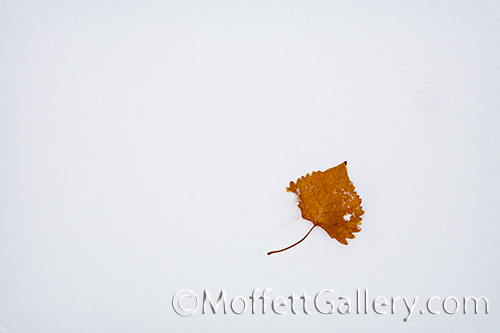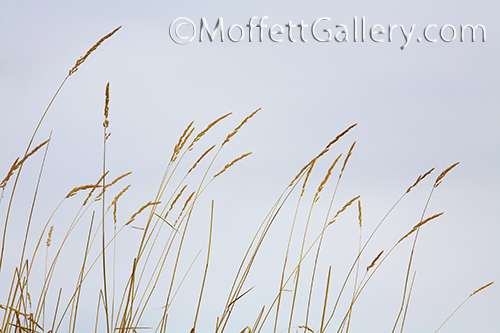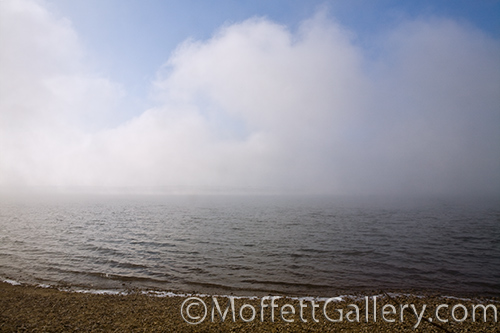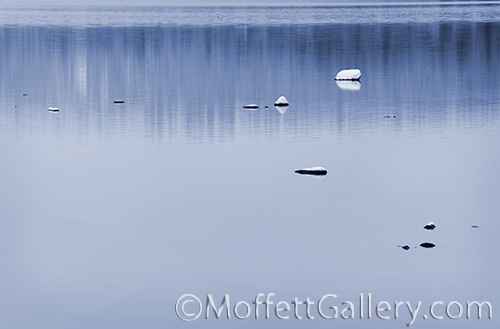by tmoffett | Dec 2, 2010 | Color, Landscape, Ramblings

Solitude
Yesterday was a snow day at school. We had the one of the top ten snowstorms on record here. It was wonderful! I realized how much I miss the snow… real snow. I grew up on the Wasatch Front where lots of snow was the norm in the winter. I lived in Upstate New York where snow and ice was expected. Then I moved to Nampa where the norm is to snow in the morning and rain in the afternoon. The snow doesn’t last long here, so when given the chance to photograph fresh fallen snow yesterday I did not hesitate! It was great to get out in the cold and tromp through the snow with camera and tripod in hand. It was quiet and peaceful and cold, but so worth it.
I have a very simple style, but even more so in the winter. When everything seems to be quiet, I think it really rubs off on me while I am photographing. I see things in a very simple way. This image is a great example of that. While I was walking along the shoreline of the lake I noticed several leaves partially buried in the snow, and then I came across this one. It must have just fallen as it was completely on the surface. The soft light allows the intricate detail in the leaf to be recorded, as well as the texture of the fresh snow. It seemed as though it was just waiting for me to come by and photograph it, and I did. The warm hues of the leaf against the coolness of the snow just seems to speak to me. I hope it does for you, too.
by tmoffett | Dec 1, 2010 | Composition, Landscape

Morning Haze, Sawtooth National Forest
Perspective helps create depth in a photograph. We have been discussing this concept in one of my classes. There are several ways to show perspective in an image. The obvious one, linear perspective, showing how parallel lines seem to converge in the distance, is overused by the students in the assignment. It is nice to see diminishing or aerial perspective used occasionally. This image shows the use of aerial perspective, which is created by the atmospheric haze. When accompanied by backlight, it often not only enhances the feeling of depth, but can create a mysterious feeling as well.
by tmoffett | Nov 30, 2010 | Composition, Landscape, Photographic Technique

Against the Sky
Photographs are all around us just waiting to be made. We need not travel to exotic locations to create art (although sometimes it is a nice diversion!), we just need to open our minds (more so than our eyes) to see what is around us. I preach to my students that if they find nice light they will find nice photographs. It is not about where you go but how you see that makes a great image. I have made many photographs in my own backyard.
This image can illustrate this point. On a late autumn morning, these dry grasses going to seed blowing on the hillside were not much to get excited about. However, after watching them for a few minutes, decided that they needed photographed, or really I felt the need to photograph them. As I viewed them against the hillside, they became lost in confusion, but by changing my angle of vision, dropping low and shooting from the opposite side I was able to isolate them against the hazy blue sky. The blue complimented the yellows of the dry grass, the angles provided by the soft wind and the soft light compliments of light overcast skies created a simple, yet interesting composition. It is all about your viewpoint.
by tmoffett | Nov 29, 2010 | Landscape, Ramblings

Winter Morning, Lake Lowell
I have never had a sale before, and am not sure it will happen again, but decided because it is Cyber Monday, I would try it out. For a limited time I am offering 10 inch open edition and 14 inch limited edition hand signed photographs for up to 50% off regular prices. These images are printed on the highest quality 100% cotton archival paper available. To take advantage of this offer, just select the images you would like from the blog, type it in the box to the right and select the size from the drop down menu.
by tmoffett | Nov 26, 2010 | Composition, Landscape, Photographic Philosophy

Wintery Reflections, Payette Lake
I see things simply. Somehow I can find the simple elements that together make utter chaos. We live in a a very fast-paced, even chaotic world, that unless we somehow simplify, will drive even the best of us insane. For some reason I was blessed with the ability to see simply, not just simply see. I admire photographers who can photograph the busy, complicated scene and have it make sense, but for me, I cannot do that. My style is to find the one element within a chaotic scene that shows simplicity, isolate it and render it in a quiet manner. I don’t know how I do it, it just seems to happen.
When looking at things in a simple way, consideration of space becomes crucial. Negative space creates a setting for the main subject, and can either make or break the impact of the image. If the placement is perfect, then large amounts of negative space enhance the visual impact of the photograph, imperfect placement will kill it. Being able to quickly evaluate a scene and make adjustments to maximize the impact before pressing the shutter is critical to the success of a simple image.
I love giving my students the assignment to photograph simplicity and then watch them struggle. Young people today are multi-taskers to the point of not even being able to recognize simple things. They live fast and complicated lives. Yet when the power of simplicity clicks in their minds their whole attitude changes for the better. A whole new world opens up for them to explore. It is a wonderful transformation to witness. Your challenge today is to find something simple and create something wonderful from it!
by tmoffett | Nov 24, 2010 | Color, Composition, Landscape, Photographic Philosophy, Photographic Technique

Autumn Breeze
One of the keys to great photography is to isolate your subject. So many times I see images that have numerous main subjects. They are confusing to look at because I don’t know what I am supposed to look at. It seems that the photographer has “taken” a picture without thinking before pressing the shutter. When creating a photograph (vrs. taking a picture) I am always thinking while I am working. I work slowly so that every detail is considered. The first thing I consider is what the main subject really is. Are there conflicting subjects? If so, how do I resolve the conflict? Would the photograph be better by eliminating part of it? Maybe there are multiple photographs to be made instead of just one.
The second thing that I consider is how to isolate the subject so that there is no question as to what the viewer is to look at. Do I use a wide open aperture so that the background blurs out or is the background an important element of the image? Can I change my camera angle so as to isolate the subject against a non-distracting background? That was the case in the photograph above. The sky was dark enough to not distract yet had some texture in the clouds for interest. The bluish tint in the sky perfectly complimented the golden color of the dry grasses, making it an ideal backdrop for the photograph.
Taking time to think while photographing can make all the difference between just taking a snapshot and really creating something nice! I would much rather return from photographing with one really nice image than a hundred mediocre snapshots.








Recent Comments